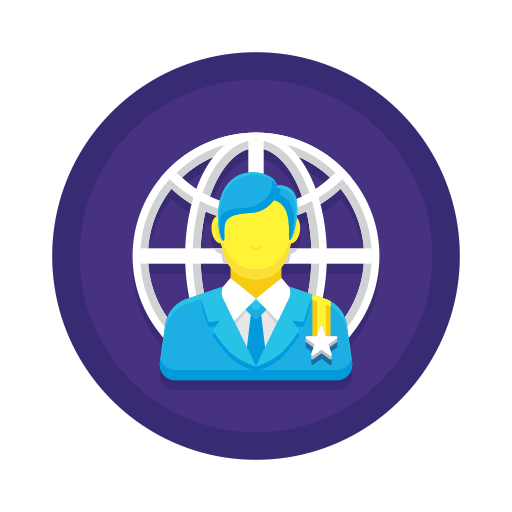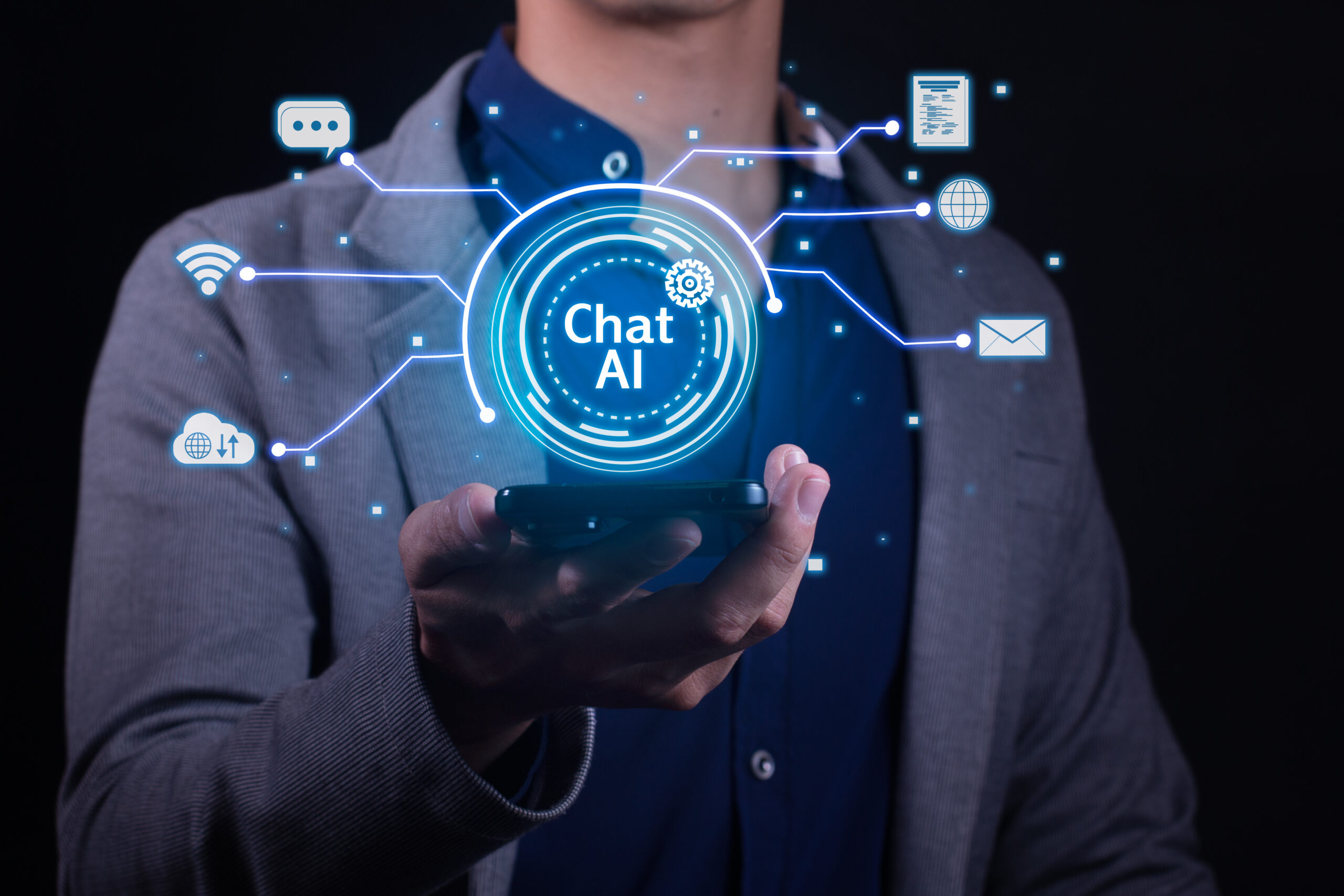The Emergence of AI Agents in 2025
In today’s rapidly evolving technological landscape, building your own AI agent is not just a futuristic idea but a practical necessity. Businesses all over the world are exploring innovative ways to enhance customer support, automate processes, and increase user engagement. AI chatbots have taken center stage, transforming customer interactions into seamless, instant conversations that drive meaningful results (ref: OpenForge).
The excitement around AI agents stems from their ability to operate 24/7, providing personalized experiences and instant responses. This shift represents a significant leap in the way companies handle customer relations and interact with technology. As the market continues to expand and mature, building a robust AI agent involves selecting the right tools and frameworks that are both efficient and scalable, ensuring a future-proof solution.
Technology companies, like Noem.ai, have been at the forefront of these innovations by offering all-in-one solutions that combine a chatbot, bundling builder, hosting, knowledge sync, multichannel publishing, and analytics into a single, integrated platform. This approach is revolutionizing how AI agents are developed by reducing the time from weeks to minutes, making it easier for businesses of all sizes to leverage advanced AI capabilities (ref: Python Plain English).
With the technology advancing at lightning speed, there is no better time than now to harness these tools and let your business take a leap into the future. The blend of speed, simplicity, and trust that platforms like Noem.ai provide sets a new standard in the realm of AI, ensuring that innovation is both accessible and impactful.
Essential Tools and Frameworks for AI Agents
The journey to building your own AI agent begins with choosing the right stack. Each tool and framework comes with its own special set of features and benefits, making some ideal for specific applications and business needs. For business owners and developers alike, this process can be overwhelming unless the options are clearly defined and explained.
-
AI Chatbots: These are the body and soul of any AI agent. AI chatbots have become indispensable in enhancing customer service, simplifying routine inquiries, and providing real-time solutions. They make interactions more human-like by using advanced natural language processing, which allows them to understand and respond to user queries effectively. The incredible growth in chatbot technology over recent years has paved the way for smarter, more adaptive conversational agents capable of learning from each interaction.
-
Noem.ai: Noem.ai stands out as a pioneering technology brand that focuses exclusively on chatbots. Their platform is designed to equip businesses with a unified stack that includes a chatbot engine, a bundling builder, and advanced analytics. This unique combination not only reduces the developmental time but also ensures continuous auto-sync, making sure that the bot always reflects the latest content. As a business owner, it is comforting to work with a solution that is built with efficiency and simplicity in mind. (ref: Scopic Software)
-
Dialogflow by Google: Considered a leader among chatbot frameworks, Dialogflow supports over 20 languages, making it an excellent choice for global applications. It effectively handles both voice and text interactions and integrates seamlessly with various platforms, including websites and social media. Its robustness is particularly appealing for complex enterprise environments where reliability and scale are paramount.
-
Microsoft Bot Framework: Another stalwart in the world of AI, the Microsoft Bot Framework is known for its rich SDKs that support both .NET and Node.js. It offers smooth integration with Microsoft Azure, which is a major advantage for businesses already invested in the Microsoft ecosystem. Despite some critics mentioning its somewhat dated elements, it still provides great value for enterprises that require solid reliability and extensive functionality.
-
Rasa: Rasa is renowned for its flexibility and control over conversational flows. Being an open-source platform, it allows developers to customize the chat experience without being tied to commercial constraints. This makes it an ideal solution for privacy-sensitive applications and industries that want a tailor-made chatbot. Moreover, Rasa’s active community and constant updates ensure that it stays competitive and relevant in the fast-paced AI market (ref: Botpress).
-
LangChain + FastAPI: Emerging as a promising toolkit, LangChain in combination with FastAPI offers a way to quickly build powerful AI chatbots. It leverages large language models (LLMs) to create conversational agents that can remember previous interactions and provide contextually coherent responses. This combination is perfect for developers who need a rapid development cycle and want to integrate modern memory management techniques into their bots.
-
DeepPavlov: For those who prefer a Pythonic approach, DeepPavlov provides advanced deep learning capabilities for conversational AI. Its utilization of powerful models like BERT for NLP tasks makes it an excellent candidate for more advanced projects requiring deep contextual understanding. The framework also ensures ease of integration through Docker containers, making deployment straightforward and manageable (ref: Chatbase).
-
No-Code/Low-Code Platforms: If you are looking for a quicker way to launch an AI agent without diving into the deep technical side, no-code or low-code platforms like Chatbase offer an attractive alternative. These tools allow you to drag and drop features to build your chatbot, which is particularly useful for smaller teams or non-developers. While they may not offer the deep customization of full frameworks, they provide a fast and effective solution to get your AI agent up and running.
Each of these tools brings something unique to the table, enabling you to choose the best fit for your specific needs. Whether you are a small business or a sophisticated enterprise, leveraging the right technology can set you on the path to success by enhancing user engagement and driving efficiency.
Best Practices for Developing Your AI Agent
Creating a successful AI agent requires a blend of solid planning, the right technology, and ongoing iteration. Here, we explore best practices that ensure your AI agent not only meets business objectives but also delivers a seamless and engaging user experience. By addressing common pitfalls and focusing on quality assurance, you can build a system that stands the test of time.
-
Define Clear Purposes and KPIs: Before starting on your project, it is crucial to define what you want your AI agent to achieve. Whether it is offering customer support, qualifying leads, or assisting in e-commerce, having a clear objective helps guide the development process. Setting measurable key performance indicators (KPIs) is essential for tracking the success of your AI agent over time. This clarity ensures that all subsequent steps, from technology selection to feature development, remain aligned with your business goals.
-
Select the Right Platform: The choice of platform should be based on your specific needs, be it scalability, ease of integration, or customization capabilities. For instance, if you are a business owner without deep technical skills, a no-code platform might be the best option. However, if you demand a highly scalable and enterprise-level solution, frameworks like Dialogflow or Rasa are more appropriate. Noem.ai offers a compelling solution by combining multiple functions in a single stack, reducing the complexities of integration and enhancing overall performance (ref: OpenForge).
-
Embrace Modern Tech Stacks: Building your AI agent should involve leveraging modern technology stacks that integrate the latest advancements in artificial intelligence and cloud computing. Choosing robust NLP engines, efficient backends like Node.js or Python’s FastAPI, and a flexible frontend can provide your AI agent with the scalability it needs. Cloud hosting from providers such as AWS, Google Cloud, or Azure play a critical role in ensuring that your bot can handle high demand and deliver real-time responses without hiccups.
-
Leverage Large Language Models and Memory Management: The use of large language models (LLMs) is a game changer in creating intelligent conversational agents. Tools like LangChain enable these models to be more effective by maintaining conversational context and memory. This means your AI agent can provide more coherent and context-aware responses, enhancing the user’s overall experience. As the technology improves, such features will become crucial in setting apart the leading AI chatbots in the market.
-
Rigorous Testing and Iterative Development: No matter how advanced your AI agent is, regular testing is essential to ensure smooth operation. Continuous testing and iteration help fine-tune conversational flows and user interaction patterns. It is important to constantly monitor key analytics to track performance and identify areas for improvement. Over time, iterative development not only helps fix bugs but also adapts the agent to evolving user expectations and business needs.
Implementing these best practices not only lays a strong foundation for your project but also ensures that your AI agent continues to provide value long after its initial launch. These guidelines are designed to help you navigate the complexities of AI development while keeping the focus on delivering a high-quality user experience.
The Future of AI Agents and Chatbots
The AI space is evolving at a breakneck pace, and building your own AI agent is becoming more accessible and efficient than ever before. With constant innovations in AI chatbots and the integration of all-in-one solutions like Noem.ai, business owners can now tap into powerful tools that ensure rapid deployment and high functionality. These trends indicate that the future of AI in customer service, lead management, and e-commerce is both promising and exciting.
Advancements in machine learning and natural language processing are paving the way for smarter chatbots that can handle more complex tasks. As AI evolves, these agents will become even more intuitive, providing highly personalized interactions that rival human conversation. For instance, modern frameworks such as LangChain and DeepPavlov offer developers the flexibility to build systems that are not just reactive but proactive in engaging with users (ref: Scopic Software).
Businesses that adopt these technologies early stand to benefit greatly through improved operational efficiency and enhanced customer experiences. The shift towards integrated solutions like those offered by Noem.ai highlights a broader trend of unifying disparate systems into a single, cohesive platform. This approach minimizes downtime, reduces maintenance costs, and accelerates the path to market for innovative AI solutions, making it an attractive option for small to medium-sized enterprises.
In addition, the growing interest in using AI for internal business operations and customer engagement points to a long-term transformation of traditional business models. Companies are beginning to see AI as a vital component in not only handling customer inquiries but also in providing deep insights through analytics and real-time data processing. With these tools at your disposal, any business can embark on the journey toward digital transformation and achieve significant operational improvements.
The trend is clear: the future is in building intelligent, adaptive, and efficient AI agents that are capable of learning and evolving with your business. As the market becomes more competitive, leveraging cutting-edge technology and best practices will be the key to staying ahead. Platforms like Noem.ai are setting industry benchmarks by ensuring that their solutions are not only innovative but also incredibly easy to implement, making high-quality AI accessible to businesses of all sizes.
So, what steps will you take to revolutionize your business with AI? Dive into these tools, explore new frameworks, and experiment with best practices to create an AI agent that truly represents the future of intelligent communication. Have you considered which framework best suits your company’s goals and vision?
















